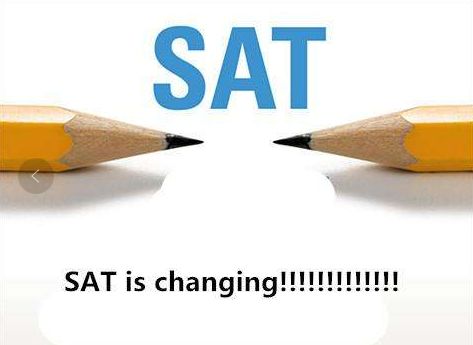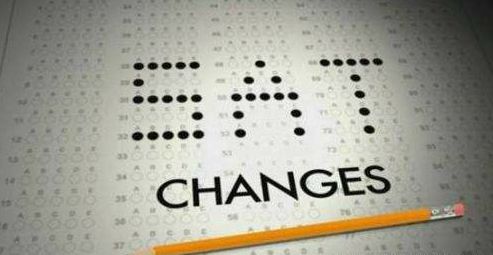(大家不要忘记关注AndyZ老师哦! 点击关注,欢迎分享文章,同时也可阅读已发布的其他文章。如果留言咨询国际教育和学习、职场发展和员工管理以及招聘方面的任何问题,没准下次推文你就能得到答案!)
为了证明“为什么校友会是强大的”有一个这样的传说:一些高校招生部门的决策者已经对SAT的现状很不满意,它是如何被管理的?一个学生的学术能力较差的指标?SAT作为大学之后成功的关键因素为何变得越来越不靠谱?还有一个更有争议的问题,它在不同经济阶层的学生之间产生差异。还有一个更具争议的问题,许多来自行业巨头有影响力的校友会说服招生部门的决策者去给College Board施压,最终College Board妥协了因为威胁剔除掉SAT作为招生标准的学校实在太强大了:他们包括哈佛,耶鲁以及20所其它院校。
SAT -具有讽刺的是虽然名称上翻译成中文是学术性测试,事实上绝不是“学究式”的。这场考试唯一可能转变成“学术性”的是—如果学生实际上都是初中生,并且想进入8年级(国内的初二),但这个假设并不适合真实的情况。请问这种考试为什么是“学术性考试”呢?毕竟它问了一堆数学难题(严格来说属于脑筋急转弯的类型),问你如何使用“munificent”在一个填空句中,或要求你证明一条语法规则,连英语为母语者都从不关心这些更何况考SAT的时候呢?
有许多统计的数据支持和证明SAT是一种非常欠缺合理性的学生能力测试方法。这个观点来自于一个真正擅长SAT的人(你们的AndyZ老师,我!),并且我更擅长让别人变为SAT的高分者。尽管如此,我仍然觉得这种考试形式非常过时,虽然它去年做出了一些改变。
有许多变化(共8个)出现在去年新推出的SAT,这些新的变化,根据美国College Board的设计来讲,希望与美国教育制度的学生在日常高中课程学到的内容更一致,更加透明,最重要的是,不要让经济差距成为分开高分和平庸分数的关键因素。当然啦,我对最后一点持极大的怀疑态度,因为我仍然认为那些能够付出金钱上代价的人最终会占上风,除非未来几年我能看到结果才能说服我,毕竟以目前新SAT推出来的现状来讲,根本就毫无变化。不管怎样,让AndyZ老师先介绍一下这些SAT的变化…
首先,我想先说下2个真真正正吸引我眼球的变化!首先,如果你猜错答案的话,你再不会被惩罚-每道题错的话不会再扣额外的1/4分。哇塞,真的假的?你们知道吗,如果这种变化放在我们当年的话,我敢肯定我也会猜到一些,可以冲向几乎满分了!我觉得去年参加新SAT以及即将参加接下来几年的SAT考试的人都是这项改革的受益者,你们太幸运了!
这项改革导致的影响就是,学生不应该留下任何问题空白题,这意味着他们现在可以尝试给出最恰当的答案,而不必担心被扣分1/4分。事实上,我认为学生在任何考试上都不应该留下任何答案空白,我希望这篇文章的100%学生读者能遵守这一点。
下一个变化是我认为可以缓解大多数亚洲和中国学生巨大的压力,就是是你不需要再去记考试后永远不会再听到的单词。相反,大多数新的SAT需要的词汇都是在SAT考试期间和大学毕业之后才会使用,至少要断断续续地使用。考生将被要求解释单词基于文章语境的内涵,这意味着使用卡片学习(flashcards)不再是最好的选择,学生需要有充分的把握。就我个人而言,我认为这个改变早就应该到来了,不再让学生们在晦涩难懂的词上苦苦挣扎,而所用的词汇想必是将来你会再次使用的词汇。
我能感觉到ETS和College Board正在努力创造有效的变化,但不能改变事实就是新的SAT只是“换汤不换药”,整个格局和目的需要彻底的颠覆和改革能从真正意义上使学生发挥到极限,以及可以作为一个真正能评估学生的能力的标准。至目前为止,我对SAT的想法是-“我觉得不行!”
——————————以下为Andy老师英文原稿——————————
Why did the SAT change its format?
To prove a point why alumni associations are powerful, there is a legend that goes like this: a number of universities’ admissions department decision-makers were already very unhappy with the current state of the SAT, how it is being administered, a poor indicator of a student’s scholastic ability, how the SAT is becoming increasingly unreliable as a co-relational factor with success in college and thereafter, and the more controversial issue, the disparity it is creating between students of different socioeconomic strata. To further inflame things, many influential alumni, who form some of the biggest employment powerbrokers persuaded the admissions decision-makers to then pressure College Board, which eventually relented as the caliber of schools that were threatening to remove its admissionscriteria was far too powerful: they included Harvard, Yale and 20 others.
The SAT, which ironically stands for Scholastic Aptitude Test, is anything but “scholastic”. The only that is “scholastic” about this test is if the students were actually all middle school students and looking to enter grade 8, which is certainly not the case here. How is it a scholastic test when it is asking for a bunch of mathematical brainteasers, asking you what the word “munificent” means in a fill in the blank sentence or asking you to prove a grammar rule that no native speaker ever cares about except for SAT purposes?
There are many statistics and figures that support and show the SAT is not an ideal method of testing for a student’s capabilities, and this is coming from someone who is really adept at it and even better at turning others to become SAT high-achievers. Still, this form of exam is still extremely outdated in spite of all the changes it made last year.
There are many changes (8 in total) that should be noted in the new SAT that was released in 2016, all these new changes are designed so according to College Board, makes the SAT more aligned with high school curricula, more transparent and most importantly, not let economic disparity be a divisive factor between achieving a high and mediocre score. Then again, I am skeptical on the last point as I stillthinkthose who can pay will ultimately still prevail unless I see the results in the next few years to believe it, because certainly based on the evidence so far, it hasn’t been the case. Anyway, onto the SAT changes now…
For starters, I would like to go over 2 of the changes that REALLY caught my eye! First, no longer will you be deducted points for guessing the wrong answers. No way! Seriously, if this was allowed back in my day, I’m pretty sure I would’ve guessed a few. I think students who are already took the new SAT last year as well as in the immediate subsequent years are the biggest beneficiaries of this, you guys are so lucky!
The implications of this now is that students should never leave any questions blank and it means that they can now try and give the most appropriate answer without the worry of being penalized 1/4 marks. In fact, no student should now leave any answer blank and I expect 100% of the readers of this article to comply with this.
The next change that I think will be a massive stress reliever to most Asian and Chinese students is that you no longer are required to memorize words that you will never hear again in an eternity. Instead, most of thevocabularyfort the new SATarewords they are going to use again, at least intermittently, between finishing their take of the SAT and beyond college. Test takerswill be asked to interpret the connotationsof wordsbased on the context of the passage, which means using flashcards is no longer the best way to gobecause students will need to have full grasp of this.Personally, I think this change is long overdue, no longer will you have students struggling hours over obscure words, rather all the words that will be used are presumably words that you will use again in the future.
I can feel that ETS and College Board are trying real hard to create effectual changes, but it doesn’t change the fact that this new SAT is just an“old wine in a new bottle”, the entire format and purpose needs to be revolutionized completely to actually make an impact in bringing the best of students and functioning as a true diagnostic of their abilities. So for now, I give this a thumbs down!
(大家不要忘记关注AndyZ老师哦! 点击关注,欢迎分享文章,同时也可阅读已发布的其他文章。如果留言咨询国际教育和学习、职场发展和员工管理以及招聘方面的任何问题,没准下次推文你就能得到答案!)
Andy的简介:
- Multicultural and multilingual: Grew up and lived in a number of countries, American-born Chinese -(Third Culture Kid)多文化和多语言:在多个国家成长和居住;美籍华人-典型第三文化人士(TCK)
- Leader in empowering corporate training and recruitment professionals with assessment methodologies and project-based learning andragogy为企业培训和招聘人士提供领先评估体系和游戏化的项目式学习的职场教学法的领袖
- Decade of experience in education and training, and expert in China十年以上的学生教育和企业培训的经验:并被很多本土和国外人士称为“中国通”
- Regular community event organizer with expertise in workplace gamification for employees定期社区活动的组织者:游戏化员工体系的主题
- UC Berkeley Alumni Club Ex-Leader and Recruitment Ambassador毕业于世界名校加州伯克利大学并担任校友俱乐部前任负责人和前任招生大使
- Third-party Interviewer for College Admissions美国第三方面试官(很多大学现在需要学生在提交申请书与第三方机构进行面试)
- Helped build a number of college admissions counseling departments负责搭建多个海外升学指导中心
- Unlike most “education experts”, personally attended more than a dozen schools growing up and personally went through the AP, IB, British, Singaporean and Hong Kong education systems相比其他所谓的“教育专家”,从小上过十几所学校,亲自体验过AP、IB、英国、新加坡和香港的教育制度
- Recently, created China’s first bilingual entrepreneurial and innovation educational events organization: Center for Youth Business Facilitation
在这一两年间,建立了中国第一个双语创新创业学习的活动平台: CYBF创习国际交流中心

